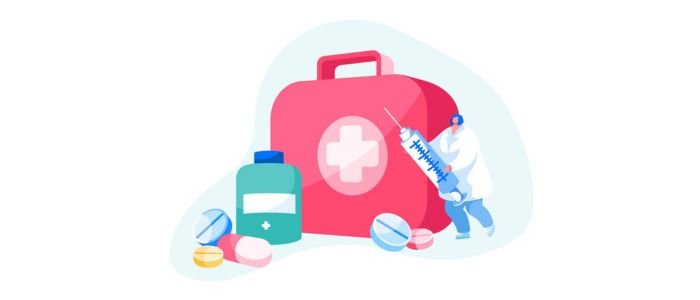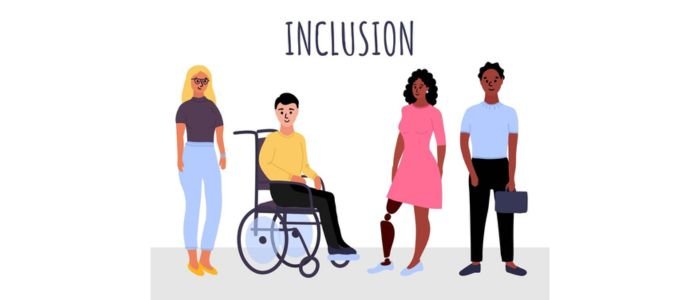The Power of Targeting Niche Demographics in Addiction Treatment
Nice demographics in addiction treatment are related to a specific group of people defined by various characteristics, like type of substance use, socioeconomic status, cultural background, gender, or age. The federal budget for drug control in the U.S. in 2024 was nearly USD 45 billion and has now increased in 2025, highlighting the growing national focus on supporting specialized care and combating addiction.
By identifying and focusing on these attributes, addiction treatment programs can provide personalized care that addresses the unique circumstances and challenges of each individual. Instead of adopting a one-size-fits-all method, providers can customize support systems, communication, and interventions to better align with the patient’s experience. Recognizing niches enables treatment facilities to enhance recovery outcomes, improve engagement, and foster trust for people who may feel misunderstood or overlooked.
Understanding Diverse Patient Needs
Factors like life experiences, age, gender roles, and cultural norms influence the development of substance use disorders and the response to treatment. Understanding such differences is important for designing programs that are compassionate and effective. Addressing patients’ diverse needs ensures that people feel supported, heard, and seen, which increases their willingness to maintain long-term recovery and engage in therapy. Customized approaches promote better health outcomes, improve adherence to treatment plans, and reduce barriers to access. Acknowledging these diversities is a cornerstone of getting more admissions for your addiction treatment center.
How Demographics Influence Addiction Treatment Recovery Needs, Triggers, & Patterns?
Demographics show what support individuals need to recover, what sparks their behavior, and how they develop addictions. By customizing care to these needs, triggers, and patterns, addiction treatment centers can increase the likelihood of patients’ long-term recovery. Breaking down this will help addiction treatment centers to illustrate the challenges different groups have to face.

Recovery Needs
- LGBTQ+ folks thrive in inclusive and affirming programs that address identity-related stressors.
- Veterans require integrated addiction treatment and mental health.
- Women need childcare support during treatment and trauma-informed care.
- Young adults benefit from education/career-focused and peer support programs.
Triggers
- Loneliness and isolation contribute to addiction in seniors.
- Discrimination and cultural stigma act as an emotional trigger for minority groups.
- Stress from family roles, finances, or employment drives middle-aged adults.
- Social media trends and peer pressure influence younger adult demographics.
Addiction Patterns
- Trauma survivors and veterans face substance use disorders and co-occurring PTSD.
- Women experience faster progression of addiction compared to men.
- Older adults struggle with prescription drug abuse/misuse related to chronic pain.
- Young adults experiment due to social environments and peer influence.
Benefits of Targeting Niche Demographics in Addiction Treatment
When addiction treatment programs center on niche demographics, they develop a kind of environment where patients feel supported and understood. This customized strategy makes recovery centers impactful and efficient, and improves clinical outcomes. Below are the benefits of targeting niche demographics in addiction treatment care.
Higher Success Rates & Personalized Treatment Plans
Demographics play an important role in making recovery requirements for patients. Customized treatment plans make sure that interventions are according to each patient’s unique challenges.
- Seniors’ programs address social isolation, chronic illness management, and prescription drug misuse.
- Adolescent programs emphasize relapse prevention, family involvement, and peer counseling strategies in college or school life.
- Women-focused programs include specialized therapy, childcare support, trauma-informed care for issues like postpartum depression.
Trust Among Patients & Increased Engagement
A huge barrier to recovery is the hesitation of people to fully engage in treatment. People don’t feel associated with the programs when there is no reflection of lived experiences, values, or background. By targeting specific demographics, treatment facilities can foster a strong therapeutic alliance and build trust. When patients feel accepted and seen, they commit to long-term recovery plans, share honestly in therapy, and open up more. For example:
- Culturally aligned programs convey social values, language, and traditions, which reduces resistance to getting help.
- Veteran-specific programs focus on making patients feel understood and having space to share military experiences.
- LGBTQ+-friendly programs provide access to a safe space where people don’t have to face discrimination.
Improved Treatment Outcomes
– Better Long-Term Recovery
Programs designed according to personal experiences nurture solid coping mechanisms. Patients expect treatment that is customized according to their realities, which results in an attainable and sustained recovery.
– Reduced Relapse
Specialized care nibs out the root cause of addiction for every demographic. Relapse rates reduce when addiction treatment centers address the ‘why’ behind addiction.
– Higher Retention Rates
Patients remain in treatment when they feel that the program reflects their challenges and identity. This reduces dropout rates that usually occur in the first stage of recovery.
Efficient Allocation for Resources for Outreach & Marketing
From an outreach and business POV, targeting niche demographics allows treatment facilities to allocate resources efficiently. Instead of generalized and broad campaigns, programs must focus on reaching the right people with customized messaging. In this way, treatment facilities ensure the marketing budget is spent where it impacts the most and reduces wasted effort.
- Content strategies can throw light on patients’ success stories with every demographic, further building trust and credibility.
- Community outreach focuses on partnerships with veteran organizations, churches, and local schools.
- Digital marketing must be customized to speak to young professionals, parents, and veterans directly.
Using PPCall (pay-per-call) campaigns is effective here, since they connect treatment centers with high-intent callers in real time. This makes sure that every marketing effort reaches the right demographics, while increasing patient admissions and budget efficiency.
Cost-Effectiveness of Specialized Programs
Niche programs could seem more expensive at first glance due to specialized outreach, training, and staff. But their effectiveness builds long-term savings in every social and healthcare system. Meaning, investing in specialized programs eventually pays off by providing economic and human benefits.
- Improved patient results contribute to healthier communities and families, reducing the burden on social services.
- Higher recovery rates lower the long-term demand for expensive interventions.
- Less relapse means reduced emergency hospitalizations and room visits.
- Marketing strategies like pay-per-call reduces wasted ad spend by filtering for encouraged callers who belong to target demographic, making every cent invested in outreach impactful.

Increased Accessibility via Partnerships
Targeted initiatives lead to greater accessibility and stronger community ties for underserved populations. Partnerships reduce barriers to entry, ensuring that patients are guided towards the help they need. Treatment facilities can:
- Collaborate with veteran support groups to guide military personnel towards the right services.
- Work closely with faith-based organizations to engage spiritual and cultural communities.
- Partner with different schools to reach at-risk youth.
Reduced Isolation & Stigma
Patients face stigma, and specialized programs help in reducing this burden by creating spaces for belonging and acceptance.
- Mothers and women feel validated in spaces that consider their struggles with caregiving and addiction.
- Cultural minority groups find hope in programs that dismantle harmful stereotypes and respect traditions.
- LGBTQ+ communities benefit from affirming spaces that battle discrimination.
Challenges & Solutions in Targeting Niche Demographics in Addiction Treatment
When targeting niche demographics in addiction treatment, offer clear benefits since it comes with a set of challenges that recovery centers should navigate carefully. These hurdles can erode the effectiveness of specialized programs. Below are common challenges and practical solutions to overcome them.
Need for Specialized Staff Training & Cultural Competence
Varying views on addiction, language barriers, and cultural differences can create disconnection between care providers and patients. Staff can unintentionally overlook key aspects or alienate patients during their recovery.
Solutions:
- Use of Culturally Relevant and Interpreter Materials: Involving interpreters and translating educational resources ensures patients feel respected and fully understand treatment options.
- Diverse Hiring Practices: Employing staff who know the community. This provides authenticity and builds trust.
- Ongoing Cultural Competency Training: Employees should get training in effective communication strategies, implicit bias, and cultural sensitivity customized to diverse groups.
Making Assumptions or Risk of Stereotyping
One of the main risks of targeting demographics in addiction treatment is the generalization and stereotype. This can lead to stiff treatment models that don’t work.
Solutions:
- Regular Feedback Loops: By posting patient feedback, treatment facilities can ensure care is responsive to real needs and avoid assumptions.
- Person-First Approach: Programs must emphasize that people are defined only by their demographic groups. Demographics just inform treatment without dictating it.
- Individualized Assessments: Each patient must undergo a profound intake evaluation that looks beyond demographic tags to their goals, health, and personal history.
Resources & Funding
Specialized programs require additional resources, like community outreach, staff training, and customized therapy. Getting funds for such initiatives becomes difficult, especially for smaller treatment facilities with limited budgets.
Solutions:
- Scalable Models: Treatment facilities can start small workshops or support groups to scale as the funding grows.
- Demonstrating ROI: Track results of specialized programs to determine their cost-effectiveness. Data on lower emergency healthcare costs and relapse rates help in securing long-term financial support.
- Private-Public Partnerships: Partner with healthcare systems, nonprofits, and local businesses to build sustainable funding models and share resources.
- Grant Opportunities: Look for funding from nonprofits, state, or federal grants created to support underserved communities.
Balancing Inclusivity with Targeted Messaging
Marketing for addiction treatment programs toward niche demographics can create tension between exclusivity and inclusivity.
Solutions:
- Community Collaboration: Join hands with advocacy groups that represent demographics to ensure the message is inclusive and accurate.
- Intersectional Approach: Recognize people who belong to different demographics. Messages must resonate with the complications of an individual’s identity.
- Inclusive Messaging: Addiction treatment centers’ marketing campaigns must welcome everyone.

Navigating the Complexity of Multiple Demographics
Individuals belonging to multiple overlapping demographics are a big challenge.
Solutions:
- Patient-Centered Planning: Including patients in designing their treatment plans directly ensures their unique needs and identities are fully considered.
- Collaborative Care Teams: Bringing together different specialties and professionals ensures patients get comprehensive support.
- Intersectional Care Models: Programs must avoid siloed methods and instead create various flexible care plans that account for multiple identities.
Competency & Training
Delivering demographic-specific and effective care requires highly trained professionals who understand the unique challenges of every group.
Solutions:
- Continuous Education: Addiction demographics and trends need to evolve. Professional development and offering ongoing seminars and workshops ensure employees stay updated with best practices.
- Live Experience & Peer Mentorship: Hiring employees with lived experiences provides relatability and unique insights.
- Cross-Training Programs: Offer in-house training that provides employees with core skills in inclusive practices, trauma sensitivity, and cultural awareness.
Conclusion
Targeting niche demographics in addiction treatment has a huge impact. By creating programs that meet the specific needs of different groups, addiction treatment centers can help individuals feel supported and seen. This customized strategy leads to longer-lasting recovery, boosts engagement, and builds trust. Focusing on triggers and patterns of various groups gives people the power to heal on their own terms. Integrating pay-per-call strengthens strategies by linking addiction treatment centers with people who are looking for help. When pay-per-call is combined with demographic targeting, it creates a reliable path to guide patients towards the right care, reduce wasted outreach, and increase admissions.
FAQs
How do addiction treatment facilities reach niche demographics effectively?
Risks involving under-resourcing, overgeneralization, and stereotyping – mitigated by ongoing feedback and individual assessment.
How does pay-per-call support demographic targeting?
Pay-per-call connects addiction treatment facilities with high-intent callers from audiences, improving program fit and lead quality.
Is pay-per-call cost-effective for targeted outreach?
Yes. Because addiction treatment centers pay only for qualified inbound calls. Pay-per-call improves ROI and reduces wasted ad spend when campaigns are well targeted.
Is it beneficial for small addiction treatment centers to implement niche-focused services?
Yes. For small addiction treatment centers, it is suggested to start with scalable offerings and expand via grants and partnerships.


Leave a Reply